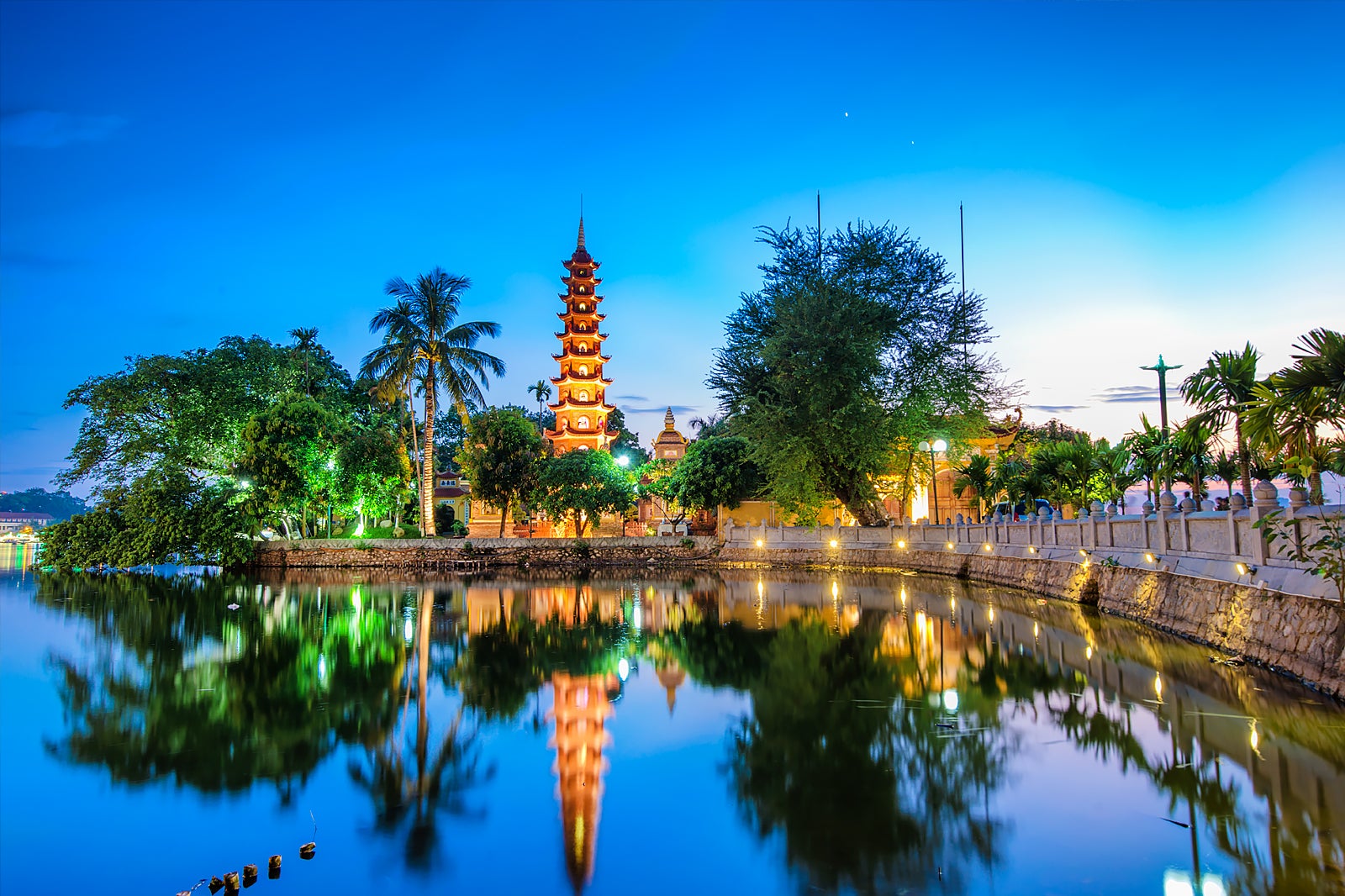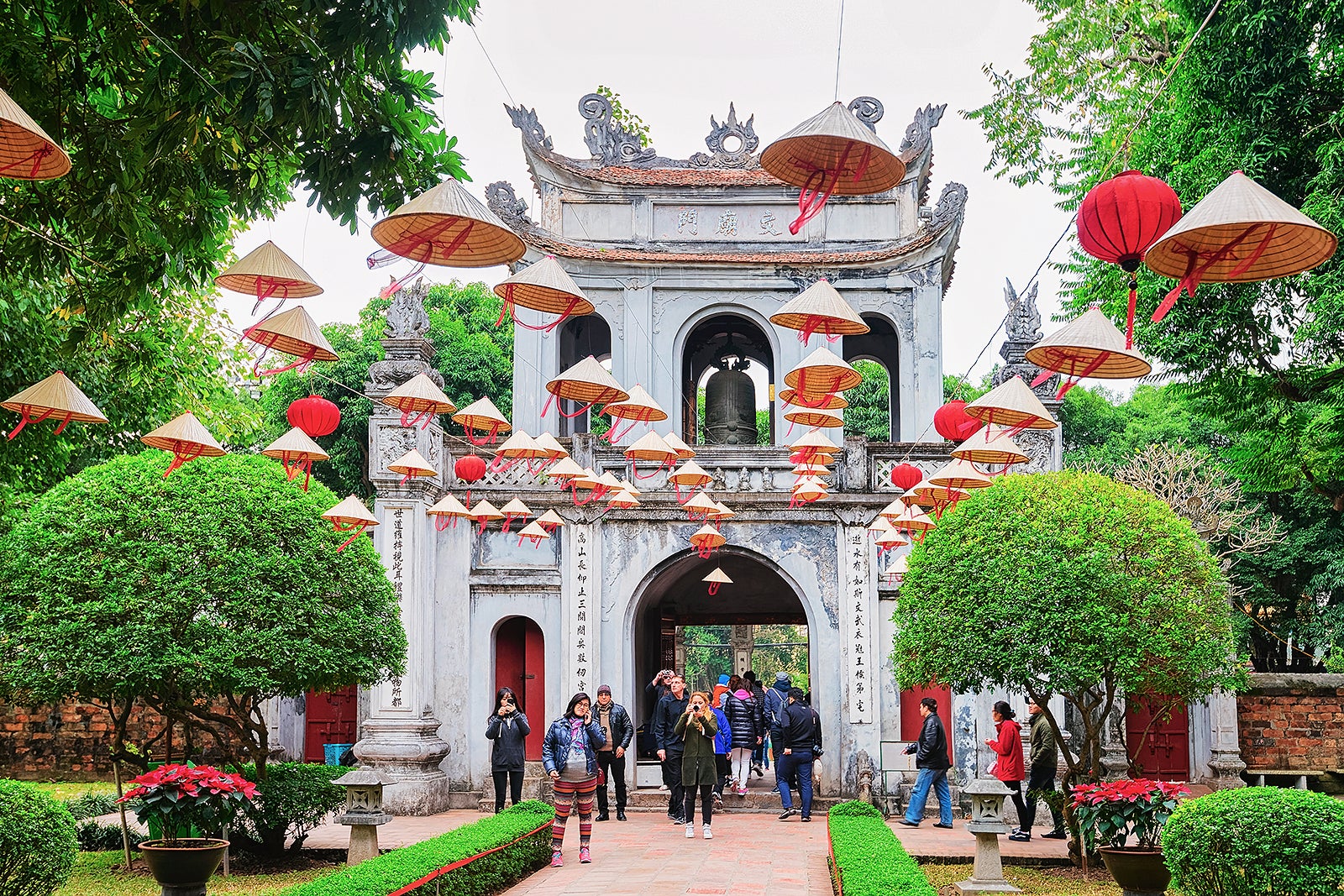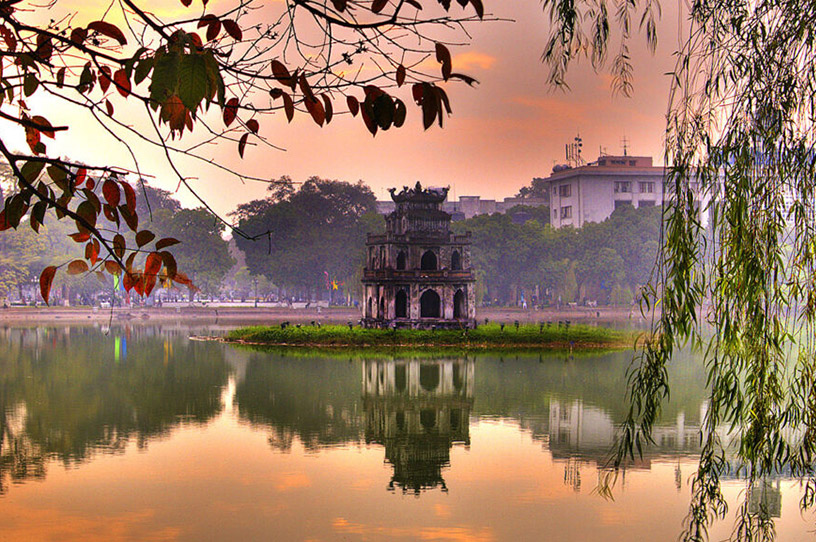
Hanoi, the vibrant capital of Vietnam, is a city that seamlessly blends ancient traditions with modern energy. Stepping onto its bustling streets is like entering a living history book, where the echoes of emperors and colonial powers resonate alongside the constant hum of scooters and the tantalizing aromas of street food. From its serene lakes and ancient temples to its captivating art scene and bustling markets, Hanoi offers a rich and unforgettable experience for every traveler.
This article will guide you through the must-see attractions, delve into the city’s fascinating history, provide essential travel tips, and offer insights into accommodation, transportation, and the best time to plan your visit. Prepare to be enchanted by the charm and dynamism of Hanoi, a city that will undoubtedly capture your heart.
Top Attractions: Unveiling the Treasures of Hanoi

Related Articles about Hanoi: A Journey Through History, Culture, and Culinary Delights:
- Sri Lanka: A Paradise Isle Beckoning Your Wanderlust
- Lebanon: A Tapestry of History, Culture, and Unforgettable Attractions
- Kazakhstan: A Traveler’s Guide to the Land of Steppe and Sky
- Türkiye: Where History Whispers and Luxury Awaits – A Guide to its Best Hotels and Unforgettable Experiences
- Bangkok: The Eternal City of Angels – A Comprehensive Travel Guide
Hanoi’s allure lies in its ability to transport you through time, offering a glimpse into Vietnam’s rich past while immersing you in the present-day vibrancy of its culture. Here are some of the city’s top attractions that should be on your itinerary:
1. Hoan Kiem Lake and Ngoc Son Temple:
At the heart of Hanoi lies the picturesque Hoan Kiem Lake, a tranquil oasis amidst the city’s chaos. The lake is steeped in legend, most notably the tale of the Golden Turtle, a divine creature said to have reclaimed a sacred sword from King Le Loi.
-
Ngoc Son Temple: Situated on a small island within the lake, Ngoc Son Temple (Temple of the Jade Mountain) is a beautiful red-painted temple dedicated to the scholar Van Xuong and General Tran Hung Dao. Access is via the iconic The Huc Bridge, a vibrant red bridge that offers stunning views of the lake and surrounding scenery.
-
Turtle Tower: Located in the middle of the lake, the Turtle Tower is another iconic landmark, a reminder of the legend of the Golden Turtle.

2. The Old Quarter:
The Old Quarter, Hanoi’s historic heart, is a labyrinthine network of narrow streets, each once dedicated to a specific trade. Today, these streets are a bustling tapestry of shops, restaurants, cafes, and street vendors.
-
36 Streets: Explore the famous "36 Streets," each named after the goods once sold there – Silk Street (Hang Gai), Bamboo Street (Hang Hom), and Silver Street (Hang Bac), to name a few. Wander through the vibrant markets, sample street food, and soak up the unique atmosphere.
-
Dong Xuan Market: This bustling market is a sensory overload, overflowing with clothing, souvenirs, electronics, and local produce. It’s a great place to experience the energy of Hanoi and find unique treasures.
3. Ho Chi Minh Mausoleum and Complex:
Pay your respects to the father of modern Vietnam at the Ho Chi Minh Mausoleum.
-
Mausoleum: This imposing structure houses the embalmed body of Ho Chi Minh, the revered leader of Vietnam. Dress respectfully (shoulders and knees covered) and be prepared for a security check and long queues.
-
Ho Chi Minh’s Stilt House and Presidential Palace: Adjacent to the mausoleum, you can visit Ho Chi Minh’s simple stilt house, where he lived and worked. Explore the Presidential Palace, a grand colonial building, to learn more about the history of the country.
-
One Pillar Pagoda: This unique pagoda, built in the 11th century, is a symbol of Hanoi and is a testament to Vietnam’s rich religious heritage.
4. Temple of Literature:
Dedicated to Confucius, the Temple of Literature is Vietnam’s first university, dating back to 1070.
- Historical Significance: Explore the courtyards, pavilions, and stelae that honor the scholars of the past. The temple offers a peaceful retreat and a glimpse into Vietnam’s educational history.
5. Hoa Lo Prison:
Known as the "Hanoi Hilton" during the Vietnam War, Hoa Lo Prison offers a poignant look at the struggles of both Vietnamese revolutionaries and American prisoners of war.
- Historical Exhibits: Explore the exhibits that showcase the history of the prison, including the harsh conditions faced by prisoners.
6. Thang Long Imperial Citadel:
A UNESCO World Heritage site, the Thang Long Imperial Citadel offers a glimpse into Hanoi’s imperial past.
- Archaeological Site: Explore the excavated remnants of the citadel, which served as the center of political power for over a thousand years.
7. Water Puppet Theatre:
Experience the unique art form of Vietnamese water puppetry.
- Traditional Performance: The puppeteers manipulate intricately crafted puppets on a water stage, accompanied by traditional music and storytelling. This is a truly unique cultural experience.
8. Museums:
Hanoi boasts a wealth of museums that showcase Vietnam’s history, art, and culture.
- Vietnam National Museum of History: Offers a comprehensive overview of Vietnamese history from ancient times to the present.
- Vietnam Fine Arts Museum: Showcases a diverse collection of Vietnamese art, including paintings, sculptures, and ceramics.
- Museum of Ethnology: Provides insights into the diverse ethnic groups of Vietnam, showcasing their cultures, traditions, and lifestyles.
A Glimpse into Hanoi’s History:
Hanoi’s history is a captivating narrative of resilience, adaptation, and cultural exchange. Its story unfolds through various periods, each leaving its mark on the city’s architecture, traditions, and identity.
-
Ancient Origins: The area of Hanoi has been inhabited for thousands of years, with evidence of human settlements dating back to the Bronze Age. The city’s strategic location on the Red River made it a vital center for trade and defense.
-
The Ly Dynasty (1010-1225): King Ly Thai To chose Thang Long (Hanoi) as the capital of the Dai Viet kingdom in 1010, marking a turning point in the city’s history. The city flourished as a cultural and economic hub, witnessing the construction of temples, pagodas, and imperial palaces.
-
The Tran Dynasty (1225-1400): The Tran Dynasty faced Mongol invasions and successfully defended the country, further solidifying Hanoi’s importance as the political and military center.
-
The Le Dynasty (1428-1788): The Le Dynasty brought a period of relative peace and prosperity. The Temple of Literature, the first university, was established during this era, fostering education and Confucian ideals.
-
French Colonial Period (1883-1954): The French colonial administration transformed Hanoi, constructing grand boulevards, elegant buildings, and the iconic Opera House. This period left a lasting architectural legacy, blending European styles with Vietnamese influences.
-
Vietnam War and Independence: Hanoi played a significant role in the fight for independence. The city endured bombing campaigns during the Vietnam War but emerged as the capital of a unified Vietnam in 1976.
-
Modern Hanoi: Today, Hanoi is a dynamic and rapidly developing city. It embraces its rich history while embracing modernity, becoming a major economic, cultural, and political center in Southeast Asia.
Travel Tips for a Smooth Journey:
-
Visa Requirements: Check visa requirements based on your nationality. Many nationalities can obtain a visa on arrival, but it’s recommended to research and prepare beforehand.
-
Currency: The currency of Vietnam is the Vietnamese Dong (VND). ATMs are widely available, but it’s advisable to carry some cash, especially for street food and smaller shops.
-
Language: Vietnamese is the official language. English is spoken in tourist areas, but learning basic Vietnamese phrases is always appreciated.
-
Transportation:
- Walking: The Old Quarter is best explored on foot.
- Taxis: Metered taxis are readily available. Ensure the meter is running.
- Motorbikes (Xe Om): Be cautious and negotiate the price before your ride.
- Grab: The ride-hailing app, Grab, is widely used and offers a convenient and affordable way to get around.
- Cyclo: A traditional three-wheeled bicycle rickshaw, offering a leisurely way to see the city. Negotiate the price beforehand.
-
Weather: Hanoi experiences four distinct seasons. The best time to visit is during the shoulder seasons (March-April or September-November) for pleasant weather.
-
Health and Safety:
- Vaccinations: Consult your doctor about recommended vaccinations.
- Food and Water: Drink bottled water and be cautious with street food hygiene. Choose vendors with a good reputation and observe food handling practices.
- Traffic: Be extremely cautious when crossing the road. Look both ways and walk slowly, allowing the scooters to navigate around you.
- Scams and Theft: Be aware of scams, especially in tourist areas. Keep valuables secure.
-
Bargaining: Bargaining is expected in markets and with street vendors.
Accommodation Options: Finding Your Perfect Base
Hanoi offers a wide range of accommodation options to suit all budgets and preferences.
-
Old Quarter Hotels: These hotels are ideal for experiencing the heart of Hanoi’s vibrant atmosphere. They are often located in renovated shophouses, offering a unique and authentic experience.
-
French Quarter Hotels: Located near the Opera House and other colonial-era landmarks, these hotels offer a touch of elegance and sophistication.
-
Luxury Hotels: Hanoi boasts several luxury hotels, offering premium amenities and services.
-
Budget Guesthouses and Hostels: Numerous guesthouses and hostels provide affordable accommodation, perfect for budget travelers.
-
Apartments and Serviced Residences: These options are suitable for longer stays, offering more space and kitchen facilities.
Transportation: Navigating the City
- Walking: The Old Quarter is best explored on foot.
- Taxis: Metered taxis are readily available.
- Motorbikes (Xe Om): Be cautious and negotiate the price before your ride.
- Grab: The ride-hailing app, Grab, is widely used.
- Cyclo: A traditional three-wheeled bicycle rickshaw, offering a leisurely way to see the city.
Best Time to Visit:
The best time to visit Hanoi is during the shoulder seasons (March-April or September-November). During these months, the weather is generally pleasant, with comfortable temperatures and low humidity.
- March-April: The weather is mild and sunny, with blooming flowers.
- September-November: The weather is also pleasant, with clear skies and cooler temperatures.
The summer months (May-August) are hot and humid, while the winter months (December-February) can be cold and damp. However, Hanoi is a year-round destination, and you can still enjoy your trip regardless of the season.
Conclusion:
Hanoi is a city that will captivate your senses and leave you with lasting memories. From its historical landmarks and cultural treasures to its vibrant street life and culinary delights, Hanoi offers a truly immersive travel experience. By following the tips and recommendations provided in this article, you can plan a successful and unforgettable trip to this enchanting city. So, pack your bags, embrace the adventure, and prepare to be charmed by the unique magic of Hanoi.





